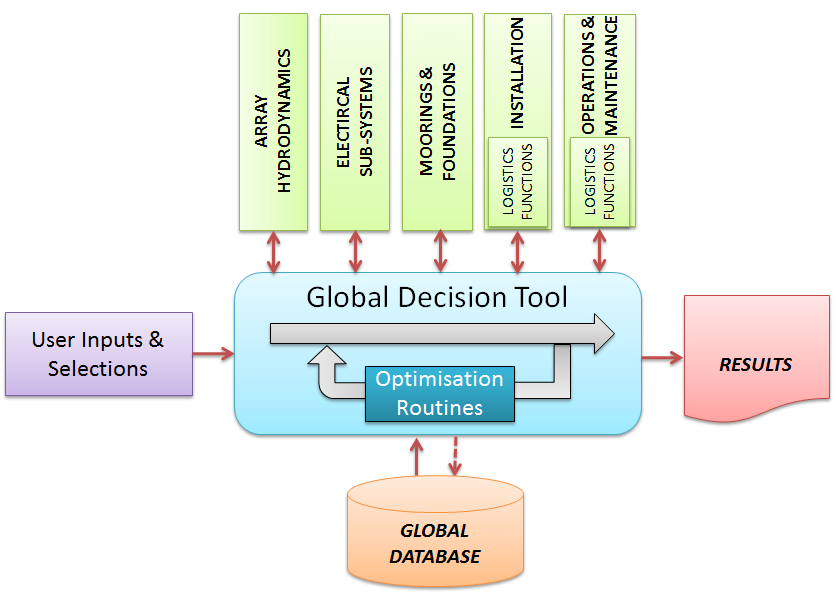4. DTOcean Overview¶
4.1. Introduction¶
4.1.1. Overall architecture¶
The software generated by DTOcean project automates the design of a feasible array of ocean energy converters (OECs) for a relevant geographical location and technology type. The design process is modularised into the following stages:
- Hydrodynamics: designs the layout of converters in a chosen region and calculates their power output
- Electrical Sub-Systems: designs an electrical layout for the given converter locations and calculates the electrical energy exported to shore
- Moorings and Foundations: designs the foundations and moorings required to secure the converters at their given locations
- Installation: designs the installation plan for the energy converters and the components required to satisfy the electrical sub-system and moorings and foundations designs
- Operations and Maintenance: calculates the required maintenance actions and power losses resulting from the operation of the converters over the lifetime of the array
The software can evaluate each stage of the design, and the design as a whole, using three thematic assessments. These are:
- Economics: produces economic indicators for the design, in particular the Levelized Cost of Energy (LCOE)
- Reliability: assesses the reliability of the components in the design over the array lifetime
- Environmental: assesses the environmental impact of each stage of the design
The challenge and ultimate goal of the project is to optimise the designs created by the software, LCOE being the priority for the optimisation.
Fig. 4.1 illustrates the modular nature of the software and the functionality of each component, in terms of the user-orientated experience. It consists of five main components:
- User inputs & selections
- A global database
- A set of computational modules
- The global decision tool
- Results

Fig. 4.1 Functional Structure
Each of these are described in the following sections.